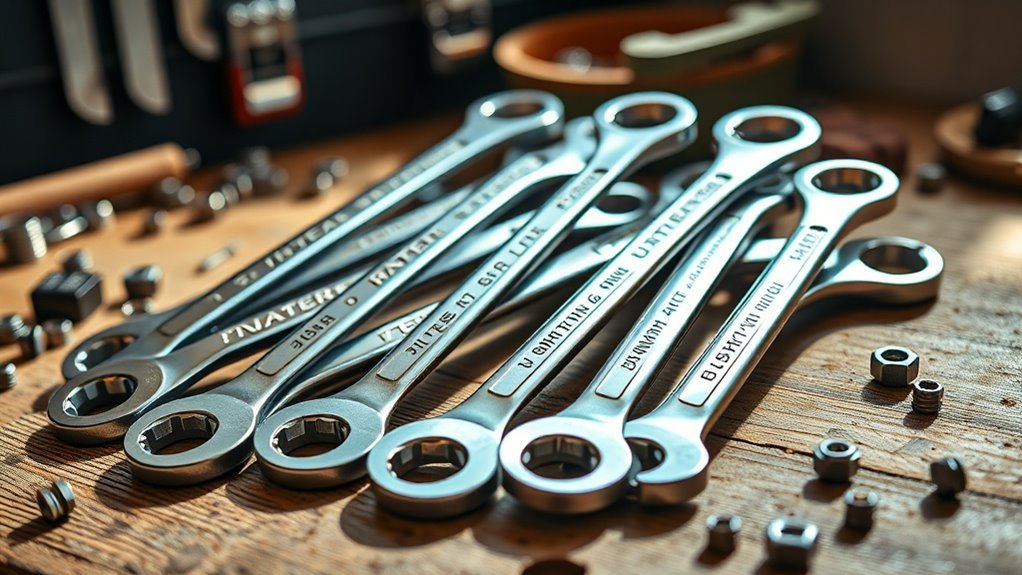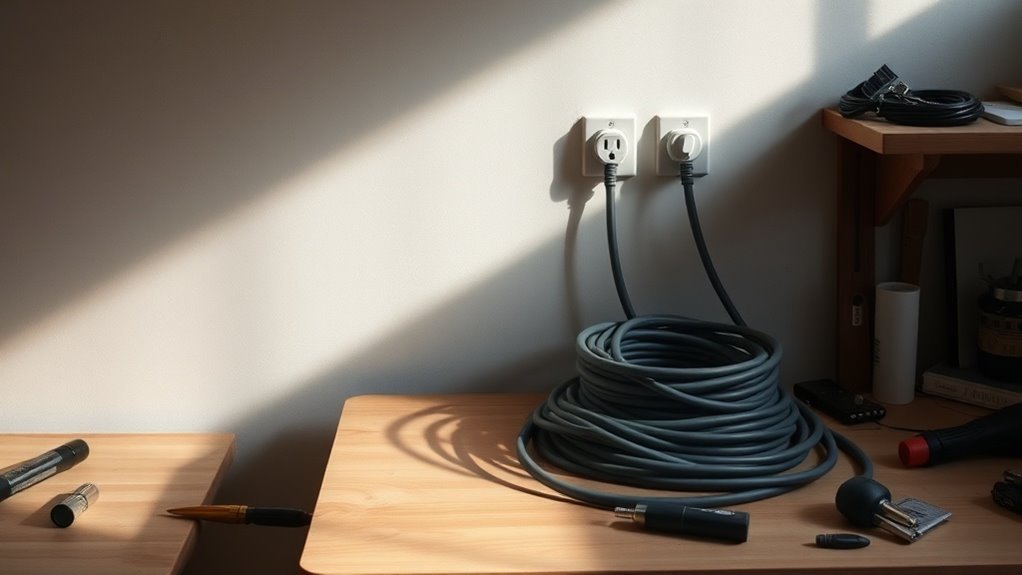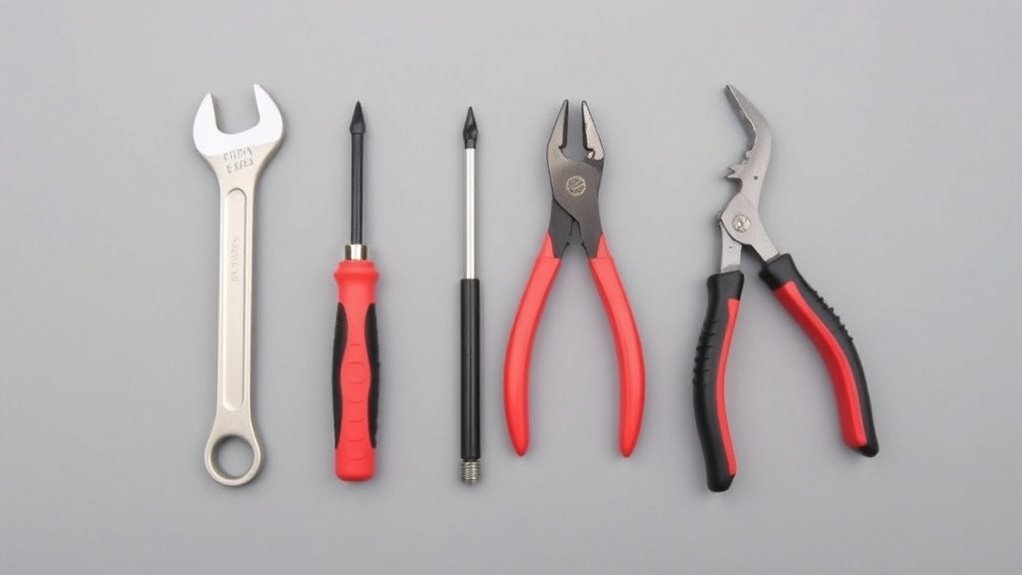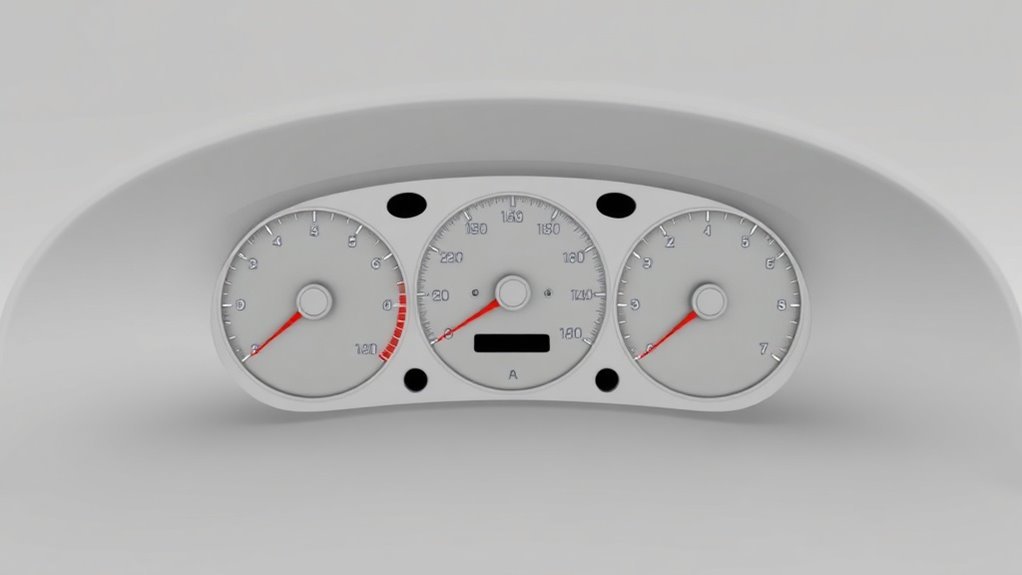Miniaturization of Tools: Challenges & Solutions

Miniaturization of tools offers increased efficiency and precision, but it comes with challenges like balancing durability and size. You’ll face issues with material selection and the intricacies of design, which can impact usability. Precision is essential; even small errors can create significant problems. Advanced engineering techniques and innovative materials can help overcome these obstacles, enhancing performance without sacrificing compactness. Discovering how these advancements are shaping the future of tool design could be quite enlightening.
Key Takeaways
- Achieving a balance between precision and durability is essential in miniaturizing tools to ensure reliability and performance.
- Material selection, such as using lightweight composites and specialized alloys, plays a crucial role in optimizing the functionality of miniaturized tools.
- Advanced manufacturing techniques, including CNC machining and laser cutting, help achieve precise tolerances while reducing waste in the production process.
- Ergonomic design considerations are important to maintain user comfort and usability in smaller tools.
- Emerging technologies like 3D printing and smart integration present innovative solutions to enhance the capabilities of miniaturized tools.
The Importance of Miniaturization in Modern Industries
As technology evolves, the importance of miniaturization in modern industries can’t be overstated.
You’ve likely noticed how smaller, more efficient tools can lead to enhanced productivity, reduced costs, and improved functionality. In sectors like electronics, healthcare, and manufacturing, miniaturization allows for the creation of compact devices that offer the same—or even better—performance than their larger counterparts.
Imagine how smartphones, medical implants, and advanced machinery have transformed your daily life and work processes. With these smaller tools, you’re able to access greater precision and versatility, fostering innovation and driving progress. Moreover, advancements in battery technology have significantly contributed to the efficiency of these miniaturized tools.
Additionally, reducing the size of tools often leads to less material waste, which is beneficial for the environment.
In short, miniaturization plays a pivotal role in shaping future advancements across various industries.
Key Challenges of Tool Miniaturization
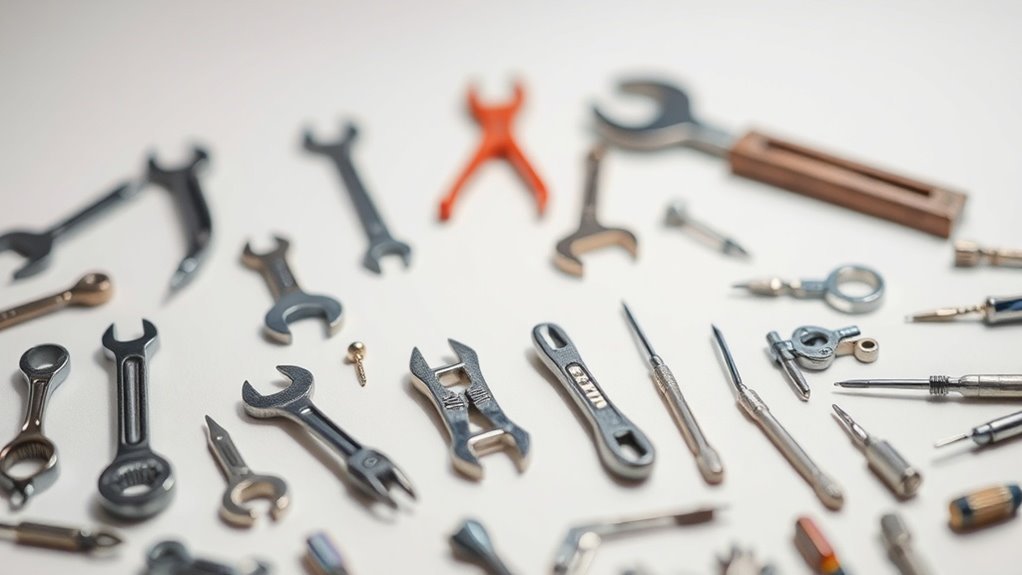
When you consider tool miniaturization, balancing precision and durability can be tough. It’s essential to find the right materials and techniques that maintain performance while reducing size. Additionally, manufacturing limitations often pose significant hurdles in achieving those compact designs. Furthermore, the use of heat shrink tubing can provide an effective solution for insulating and protecting miniature tools without adding significant bulk.
Precision vs. Durability
Balancing precision and durability remains a critical challenge in the miniaturization of tools. You want tools that can execute intricate tasks while standing up to wear and tear. It’s a delicate dance where one characteristic often sacrifices the other. Precision requires fine materials and exact measurements, while durability leans towards robust construction. Finding the right mix is key to successful tool miniaturization.
| Aspect | Description |
|---|---|
| Precision | Fine details and accurate dimensions |
| Durability | Ability to withstand stress and use |
| Balance | Achieving both without compromise |
Investing in new materials and innovative designs can help you overcome this challenge, ensuring your miniaturized tools perform effectively in various applications.
Manufacturing Limitations
Although advancements in technology have opened new avenues for tool miniaturization, several manufacturing limitations still pose significant challenges.
You might encounter issues with material selection, as scaling down tools often requires advanced materials that can maintain strength while being lightweight.
Precision in machining becomes another hurdle; even a small error can lead to major performance issues.
Additionally, the intricate designs of miniaturized tools can complicate production processes, making it difficult to achieve consistent quality.
Techniques like 3D printing offer solutions, but they also come with constraints related to speed and affordability.
Balancing these factors is essential, and staying updated on emerging manufacturing methods is key for successfully traversing the miniaturization landscape.
Impact on Functionality and Performance
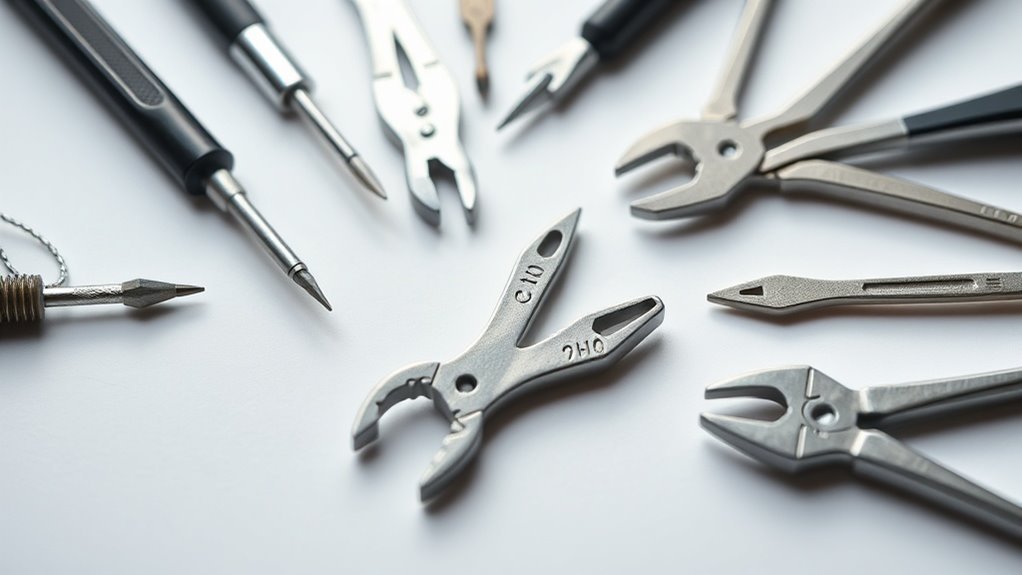
As you consider miniaturized tools, it’s vital to reflect on how their size affects precision and accuracy.
While smaller tools can enhance certain tasks, they may lead to compromised ergonomics and usability.
Additionally, the choice of materials becomes critical, as durability can be a challenge at reduced scales. Furthermore, compact design principles emphasize the need for innovative engineering to maintain functionality despite size reduction.
Scaling Precision and Accuracy
When it comes to miniaturizing tools, achieving the right balance of precision and accuracy is essential for maintaining functionality and performance.
As you scale down, even the slightest deviation can affect the tool’s effectiveness, leading to costly errors. You need to focus on high-quality materials and advanced manufacturing techniques to guarantee that every component operates flawlessly, regardless of size.
Calibration becomes critical, as tiny variations can lead to significant impacts. Using sophisticated technology, like laser machining or precision molding, can help you maintain the required tolerances.
Compromised Ergonomics and Usability
While miniaturization can lead to innovative advancements, it often comes at the cost of ergonomics and usability, which can greatly impact functionality and performance.
You might find that smaller tools are harder to grip and control, making tasks more challenging and reducing efficiency. The reduction in size can lead to cramped designs that don’t accommodate comfortable hand positions, resulting in fatigue during prolonged use.
If a tool isn’t user-friendly, it can slow you down or even lead to mistakes. Ultimately, if you can’t operate a miniaturized tool effectively, its benefits are diminished.
As a result, striking a balance between size and usability is essential, ensuring that your tools enhance rather than hinder performance in your daily tasks.
Material Durability Challenges
Miniaturized tools often face significant material durability challenges that can compromise their functionality and performance. When you rely on these tools, you’ll want to be aware of the following issues:
- Wear and Tear: Smaller components are more prone to damage from repeated use, leading to quicker degradation.
- Heat Resistance: As you operate tools, heat can build up. Miniaturized designs often lack adequate heat-resistant materials, hindering performance.
- Corrosion: Mini tools often use lighter materials that may not offer sufficient resistance to moisture and chemicals, making them susceptible to rust or deterioration.
Keeping these challenges in mind helps you better assess the reliability and longevity of the miniaturized tools you depend on for your tasks.
Durability and Material Considerations
As tools shrink in size, their durability and the materials from which they’re made become essential factors to reflect upon. You’ve got to contemplate how smaller dimensions can impact the strength and longevity of these tools.
High-quality materials like titanium or advanced polymers might be your best bet, as they combine lightweight properties with excellent durability. You wouldn’t want a tool that’s easy to carry but fails under pressure.
Additionally, you’ll need to evaluate how wear and tear can accelerate when minimizing a tool’s structure. It’s vital to prioritize both resilience and functionality, ensuring that even compact tools hold up during rigorous use without compromising their effectiveness. Moreover, understanding the significance of hardness and toughness is crucial in selecting materials that can withstand increased stress without deformation.
Balancing these aspects is key to successful miniaturization.
Advances in Engineering Techniques
Recent breakthroughs in engineering techniques have greatly enhanced the miniaturization process of tools, making them more efficient and versatile. You’re likely to see a range of exciting advancements that address key challenges faced in this field. Here are three notable approaches:
- Precision Manufacturing: Techniques like CNC machining and laser cutting allow for exact component fabrication, minimizing waste and maximizing accuracy.
- Microfabrication: Utilizing photolithography and electroplating, engineers can create extremely small features, resulting in tools that fit neatly into tight spaces.
- Integrated Design: Modular designs enable multiple functions within a single tool, reducing size without sacrificing capability.
These advances mean that as an end-user, you’ll benefit from improved tools that not only perform better but also occupy less space in your toolbox. Furthermore, these innovations reflect a broader trend towards ergonomic considerations in tool design that enhance user comfort and efficiency.
Innovative Materials for Miniaturized Tools
While traditional materials have served well in tool construction, the emergence of innovative materials is revolutionizing the miniaturization of tools.
You’ll find that lightweight composites, like carbon fiber or advanced polymers, offer strength without adding bulk. Metals such as titanium and specialized alloys provide durability and resistance to wear, making them ideal for tiny precision tools.
Additionally, nanomaterials enhance performance by boosting strength at a micro level, ensuring longevity and efficiency. The adoption of brushless motor technology in power tools is also gaining traction, as it complements these innovative materials by offering increased efficiency and longer lifespan.
These innovative materials not only enable more intricate designs but also improve functionality, allowing for tools that fit into tighter spaces without compromising performance.
Future Trends in Tool Miniaturization
The future of tool miniaturization is set to unfold exciting possibilities, with advancements in technology paving the way for even smaller, more efficient tools.
You can expect to see significant trends that will revolutionize the way you think about tools in various fields. Here are a few:
- Smart Integration: Tools will increasingly incorporate smart technology, allowing for real-time data collection and enhanced functionality in compact designs.
- Bio-inspired Designs: Nature will inspire innovative tools, leading to designs that utilize structures found in biological organisms for improved performance and efficiency.
- 3D Printing: This technology will enable the rapid and precise production of miniaturized tools, reducing manufacturing times and costs while allowing for customized solutions.
These trends promise to reshape your toolkit, making it lighter and smarter!
Questions
What Are the Historical Developments in Tool Miniaturization?
You’ll find that from the Industrial Revolution’s precision tools to today’s nanotechnology, advancements in materials, manufacturing processes, and electronics have noticeably driven tool miniaturization, enabling more efficient designs and improved functionality across various fields.
How Does Miniaturization Affect Tool Manufacturing Costs?
When tools shrink like dreams unfolding, their manufacturing costs can either rise or fall. You’ll find that precision often demands higher investments, yet economies of scale can lead to delightful savings in mass production.
What Industries Benefit Most From Miniaturized Tools?
You’ll find that industries like electronics, medicine, and automotive benefit the most from miniaturized tools. These sectors require precision and compactness, making smaller tools essential for innovation, efficiency, and improved functionality in their products.
Are There Specific Safety Concerns With Miniaturized Tools?
Yes, there’re safety concerns with miniaturized tools, like handling delicate items. They can be harder to control, increasing the risk of accidental injuries or equipment damage. Always prioritize careful use and proper training to mitigate risks.
How Do Consumer Preferences Influence Tool Miniaturization Trends?
Consumer preferences drive tool miniaturization by demanding portability and convenience. You’ll notice trends shifting towards lightweight, compact designs that fit into modern lifestyles, as people increasingly value flexibility and ease of use over traditional sizes.
Conclusion
In miniaturizing tools, you’re not just enhancing precision; you’re redefining possibilities. You’re facing challenges in durability, functionality, and materials, yet innovations in engineering and new materials pave the way for solutions. As you embrace these advancements, you’re not just keeping pace with industry trends; you’re shaping the future. By tackling these hurdles head-on, you’re ensuring that miniaturization continues to drive progress, fostering a world where efficiency, precision, and innovation go hand in hand.


